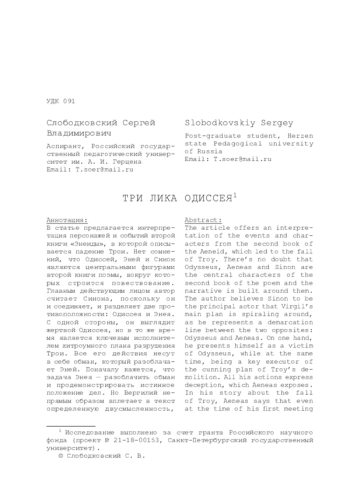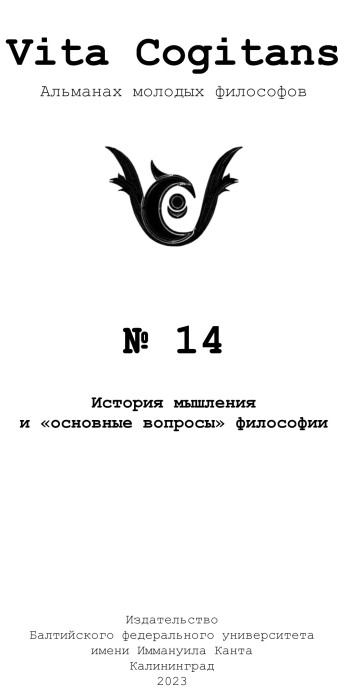В статье предлагается интерпретация персонажей и событий второй книги «Энеиды», в которой описывается падение Трои. Нет сомнений, что Одиссей, Эней и Синон являются центральными фигурами второй книги поэмы, вокруг которых строится повествование. Главным действующим лицом автор считает Синона, поскольку он и соединяет, и разделяет две противоположности: Одиссея и Энея. С одной стороны, он выглядит жертвой Одиссея, но в то же время является ключевым исполнителем хитроумного плана разрушения Трои. Все его действия несут в себе обман, который разоблачает Эней. Поначалу кажется, что задача Энея - разоблачить обман и продемонстрировать истинное положение дел. Но Вергилий непрямым образом вплетает в текст определенную двусмысленность, касающуюся правоты троянцев и статуса Энея, как «агента правды». Все, в чем Эней обвиняет ахейцев, можно найти в действиях его и его спутников. Получается своего рода схема-симулякр: Вергилий неявно использует философскую логику отношения знака и означаемого для описания его персонажей. Если учесть, что одним из мотивов написания поэмы «Энеида» было восхваление фигуры Августа и его правления, то не является ли это демонстрацией, что новая эпоха, эпоха империи, отчаянно рядящаяся в одежды республики, только по внешнему виду является ею? Республиканского уже нет, все его признаки - это знаки и образы, не имеющие реального значения и первообразов, то есть симулякры.
The article offers an interpretation of the events and characters from the second book of the Aeneid, which led to the fall of Troy. There’s no doubt that Odysseus, Aeneas and Sinon are the central characters of the second book of the poem and the narrative is built around them. The author believes Sinon to be the principal actor that Virgil’s main plan is spiraling around, as he represents a demarcation line between the two opposites: Odysseus and Aeneas. On one hand, he presents himself as a victim of Odysseus, while at the same time, being a key executor of the cunning plan of Troy’s demolition. All his actions express deception, which Aeneas exposes. In his story about the fall of Troy, Aeneas says that even at the time of his first meeting with Sinon, the Trojans suspected him of being a liar. Describing the subsequent events, Aeneas tells how Odysseus’s plan to destroy his homeland was fulfilled. In Virgil’s representation the character of Odysseus stands for the idea of cunning deceit, and Sinon personifi someone who brings those plans to life. At first, it seems that the task of Aeneas is to expose deception and demonstrate the truth. But along with this idea, Virgil weaves into the text a certain doubt that concerns the righteousness of the Trojans and Aeneas. He demonstrates it through a simulacrum outline. Everything that Aeneas accuses the Achaeans of can be found in his own actions and those of his friends.











